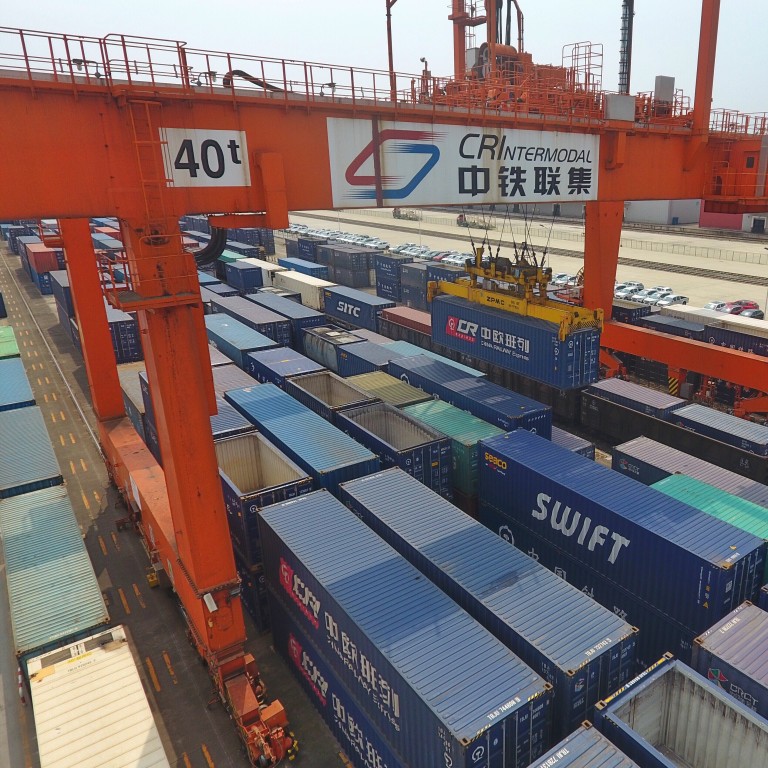
China’s rail shipments to Europe set records as demand surges for Chinese goods amid coronavirus
- July saw 1,232 cargo trains travel from Chinese cities to European destinations – the most ever in a single month
- Once regarded as merely ornamental, freight service along belt and road trade routes has become increasingly important as exporters turn to railway transport
The volume of China’s belt and road railway cargo to Europe has set records for five consecutive months as Covid-19 has limited transport by air and sea while causing an increase in the demand for Chinese-made medical supplies abroad, according to the China State Railway Group.
The latest figures from the state-owned railway builder, also known as China Railway, showed that a total of 1,232 trains were arranged from different Chinese cities to European destinations in July. It was the highest monthly figure ever, and an increase of 68 per cent from a year earlier.
In addition, the trains are getting longer as 113,000 standard cargo containers were shipped last month, a year-on-year increase of 73 per cent.
In the first seven months of 2020, freight services between Chinese cities and destinations along the Eurasia trade routes tallied 6,354 trips, an increase of 41 per cent from a year earlier, the railway group said.
The Belt and Road Initiative is a vast China-centred strategy to grow global trade and gain international influence. Masterminded by President Xi Jinping, the plan involves dozens of countries and more than US$1 trillion in investment.
In July, China posted a trade surplus of US$62.33 billion, with exports surging 7.2 per cent in US dollar terms, as imports fell 1.4 per cent. Despite the coronavirus having hit global demand, analysts have pointed to strong shipments of medical supplies and work-from-home equipment as a driving factor behind the surge in exports.
Yiwu, an export hub in east China’s Zhejiang province, sent 33,452 containers to central Asian and European countries via railway lines in the year’s first seven months, tripling the amount transported a year prior. In the same seven-month period, the city of Chengdu in Sichuan province dispatched about 1,200 trains on the China-Europe railway – a year-on-year increase of 58.6 per cent.
Even Guangzhou, southern China’s manufacturing hub with easy access to maritime ports, is stepping up northbound railway transport. The city launched a new railway freight service to Russia earlier this month.
Chinese media has reported that several cargo shippers had been notified that some of their shipments could not even be completed within the agreed-upon time due to backlogs at border ports, as terminals struggle to handle the rise in cargo.
Chinese foreign ministry spokeswoman Hua Chunying said last month that freight trains had transported 27,000 tonnes of medical supplies from China to European countries, an increase of 41 per cent year on year. These materials have been sent to Italy, Germany, France, Spain, the Czech Republic, Poland, Hungary, the Netherlands, Lithuania and other countries, with some goods then transferred to other parts of Europe, according to Hua.
Since the Belt and Road Initiative was announced in 2013, many local governments have rushed to open train services through the vast central Asian territory between China and Europe to show their loyalty to Xi. However, railway transport still accounts for a relatively small portion of China’s trade.

